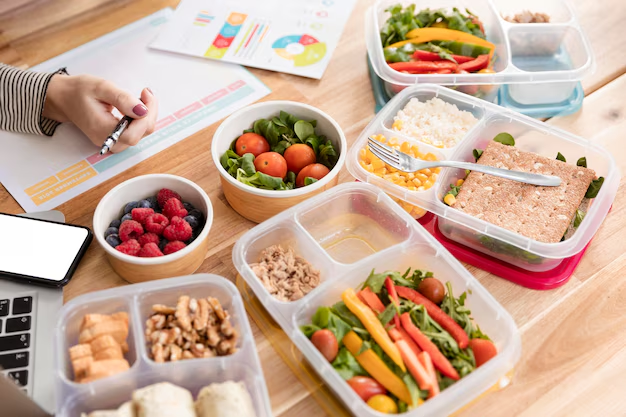How Long is Too Long? A Comprehensive Guide to Food Storage in the Refrigerator
Refrigeration plays a crucial role in preserving the freshness and safety of the food we consume daily. But how long is too long to keep those leftovers or that unopened carton of milk in your refrigerator before things take a turn for the worse? Understanding the safe storage timeframes for various foods can help reduce waste and ensure you and your family are consuming food that’s both safe and tasty.
🥶 The Importance of Refrigeration
Refrigeration helps slow the growth of bacteria, prolonging the shelf life of perishable foods. However, refrigeration doesn't make food impervious to spoilage. Over time, even refrigerated foods can develop harmful bacteria or degrade in quality. Knowing the recommended storage times can optimize your meal planning and reduce food waste.
🥗 Fresh Produce: How Long Can It Last?
Fruits: Most fruits remain fresh for a week in the refrigerator. However, some fruits like apples can last up to three weeks, while berries tend to spoil faster, usually within a few days.
Vegetables: Leafy greens, a staple in salads, can typically last for up to a week. Root vegetables like carrots and beets have greater longevity, often staying fresh for several weeks when stored correctly.
Tips for Storing Produce
- 🍏 Apples: Store in a crisper drawer, away from strong-smelling foods to prevent absorption of flavors.
- 🥬 Leafy Greens: Wash and dry thoroughly before storing in breathable bags.
- 🥕 Carrots: Cut tops off to help them last longer, and keep in a crisper drawer.
🍗 Meat and Poultry: Your Guide to Safe Storage
Raw Meats: Poultry and ground meats are best used within one to two days of purchasing. Larger cuts of beef and pork may last three to five days.
Cooked Meats: These should generally be consumed within three to four days, maintaining quality and safety.
Tips for Storing Meats
- Wrap Tight: Use airtight containers or heavy-duty foil/plastic wrap to prevent exposure to air.
- Label with Dates: Keep track of storage times by marking everything clearly.
🐟 Seafood: Treading the Waters of Freshness
Fresh Fish and Shellfish: These should ideally be consumed within 1-2 days. Seafood can spoil exceptionally fast, so it’s prudent to purchase it close to when you plan to cook it.
Cooked Seafood: Like cooked meats, consume within three to four days.
Quick Storage Tips
- Ice it Down: Placing seafood on a bed of ice in the fridge can help maintain its freshness.
- Separate: Keep seafood away from other foods to prevent cross-contamination.
🥖 Dairy and Eggs: Navigating Shelf Life
Milk and Cream: Most of these can last about a week past their sell-by date if stored properly.
Cheese: Hard cheeses such as cheddar or gouda last for several weeks, while softer cheeses might require stricter observation of expiration dates.
Eggs: Stored in their original carton, eggs can maintain quality for up to three weeks.
Tips for Storing Dairy
- 🥛 Milk: Keep milk in the coldest part of the fridge, not on the door.
- 🧀 Cheese: Wrap tightly in wax or parchment paper, then place in a plastic bag.
🥘 Leftovers: Giving New Life to Old Meals
General: Most leftovers maintain quality for three to four days in the refrigerator. Timing is critical to ensure safety and taste.
Storage Tips for Leftovers:
- Small Portions: Store in small, shallow containers to cool quickly.
- Reheat Safely: Ensure thorough reheating to revive the dish.
🥡 Summary Table: A Quick Reference for Refrigeration Timelines
| Food Type | Storage Duration |
|---|---|
| Fresh Fruits | 1 week (varies by type) |
| Fresh Vegetables | 1-2 weeks (root veggies longer) |
| Raw Poultry | 1-2 days |
| Raw Beef/Pork | 3-5 days |
| Cooked Meats | 3-4 days |
| Fresh Seafood | 1-2 days |
| Milk | 1 week past sell-by date |
| Eggs | Up to 3 weeks |
| Leftovers | 3-4 days |
🧼 Hygienic Practices: Keeping Your Fridge Safe
Regular Cleaning: Ensure the cleanliness of your refrigerator to discourage bacteria and mold growth. Aim to clean spills and organize contents regularly.
Temperature Check: Ensure your refrigerator is set to the optimal temperature (below 40°F or 4°C) to keep food safe.
Organizational Tips:
- Top Shelf: Store ready-to-eat foods here.
- Middle Shelves: Ideal for dairy products.
- Bottom Shelf: Place raw meat here, protected and separated, to prevent contamination.
- Crisper Drawers: Preserve vegetables and fruits effectively by controlling humidity.
🌟 Final Insights
In a world where food safety and sustainability are ever-important, knowing how long to keep food in your refrigerator is essential. By following these guidelines, you can minimize waste, save money, and, most crucially, keep your meals fresh and safe for consumption. Empower yourself with this knowledge, and navigate your kitchen with newfound confidence and efficiency.
Remember, when in doubt, it’s often better to err on the side of caution and dispose of items that have lingered too long. Happy storing! 🥳
